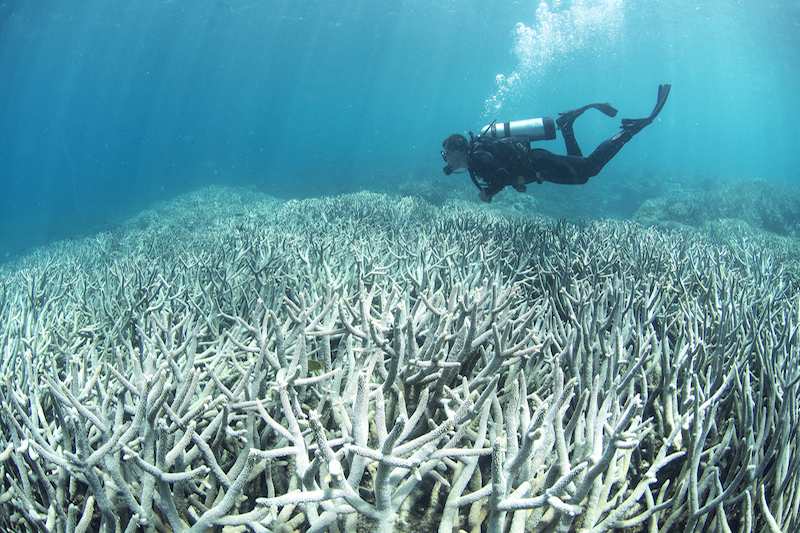Coral reefs are under existential threat. This year alone large scale bleaching has been observed on 500 separate coral reefs along the Great Barrier Reef, and up to 50% of bleached corals from in water surveys have already died, in what is being called the “worst mass bleaching event in history.” Unfortunately for coral, bleaching is only one of a handful of threats silently waging war on reef building corals
A reef building coral is any stony coral which has the capacity to build calcium carbonate reefs. These complex reefs are a latticework of branching, plating or encrusting corals which provide indispensable ecological services for fish and the surrounding coastal populations.

For decades, coral reef ecosystems have been suffering from the side effects of a growing human population. This rapid increase in growth has lead to localized threats to coral including sedimentation, nutrient runoff and overfishing, while also contributing to climate change related stressors like coral bleaching or ocean acidification.
Corals are being smothered to make way for shipping ports, juvenile corals are growing weaker skeletons in a more acidic ocean and stressed corals are getting viral infection. Little by little these local stressors are chipping away at the health and resilience of reef building corals leaving them vulnerable to wide scale global stressors like coral bleaching.
A recent study published in the journal proceedings of the Royal Society B looked at the distribution of benthic reef communities in the presence and absence of human population. The analysis of more than 56 islands in the central Pacific found that reefs surrounding uninhabited islands supported more reef building corals, and reefs surrounding inhabited islands shifted towards fleshy turf and macroalgae. The results come from an unprecedentedly large dataset collected over the last 10 years.

So why are reef building corals being hit the hardest by bleaching
Reef building corals, especially around populated areas, are under local and global threats which increase their vulnerability to bleaching. A stony coral which is competing for survival with encroaching turf algae, ravenous starfish or sediment runoff will have less strength to endure rising ocean temperatures causing bleaching. As these reefs shift towards a fleshy nonreef building habitat it becomes more difficult for coral to grow and for juvenile corals to settle.
Healthy thriving corals reefs are cemented by layers of encrusting crustose coralline algae which bind together sediment and help stabilize the reef. The pink algae has special chemical cues which encourage the larval settlement of corals and the abundance of coralline algae is also linked to herbivores such as urchins and fish which may also help to promote coral recovery.

It seem once the balance has been tipped from stony to fleshy it becomes harder for reef building corals and coralline algae to grow making it increasingly difficult for new generations of corals to develop. When bleaching hits, coral reefs on the fringes of encroaching fleshy algae are at the highest risk for the fleshy algae to take over and ‘consume’ the reef.
Why there’s still hope
In 1998 unprecedented coral bleaching was observed around the world in what was considered the most severe coral bleaching episode ever recorded. Reef from the Middle East, to the Caribbean were affected and up to 95% of corals were lost in places like the Maldives. Bleaching was highest in shallow water (less than 15 m) and particularly affected staghorn, plate Acropora and other fast growing reef building species.

The coral bleaching of 1997-1998, is the most geographically widespread ever recorded, and at the time the most severe bleaching event in recorded history. In 2005, seven years after coral reef had been devastated by bleaching, researchers in Palau documented that reefs which were bleaching in 1998 had “come back to life.” This phenomenon was coined the Phoenix Effect and occurs when small coral polyps or tissue stay alive inside the corals leaving tiny survivor polyps to recolonize the coral skeleton.
For this to happen the reef needs to be in a positive balance where reef building coral out number fleshy algae, population pressure or localized environmental threats need to be low and healthy population of herbivores need to be present to keep encroaching algae in check. Reefs which are already weakened by threats stand little chance of survival when wide scale coral bleaching strikes stony coral reefs.



